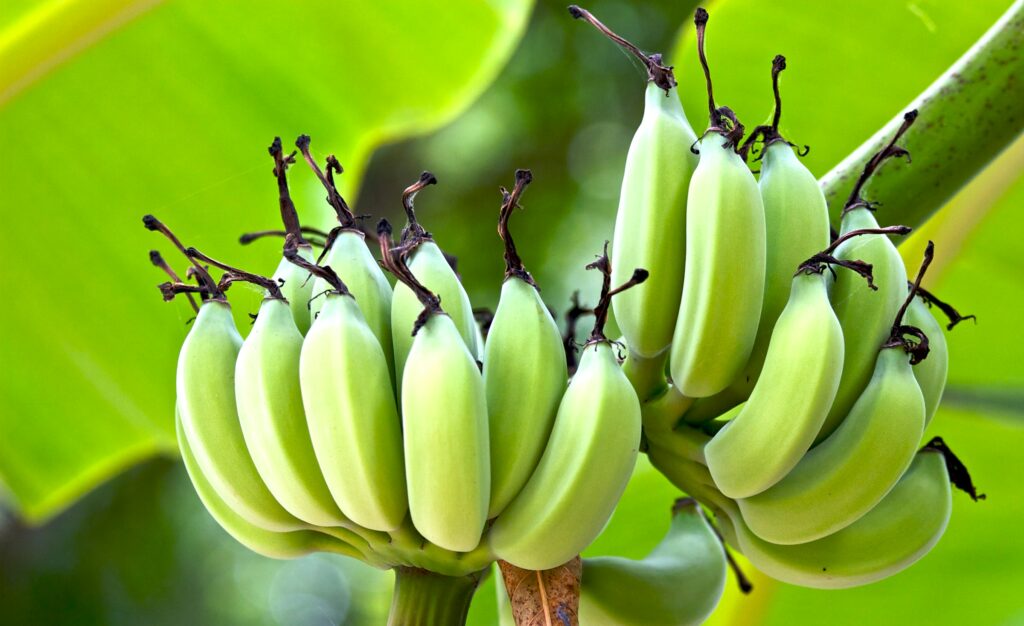Banana trees are tropical icons — tall, leafy, and bursting with energy. In Malaysia, they’re practically everywhere, but many people still think growing them at home is a “kampung thing.” Not true! With the right knowledge, you can grow bananas even in an urban backyard or corner lot.
In this guide, you’ll learn how to go from anak pokok pisang (sucker) to a full bunch of sweet pisang in your own garden.
🍌 Why Grow Bananas at Home?
- Fast-growing and productive
- Hardy and low-maintenance
- Edible fruit + leaves (for nasi lemak, kuih, etc.)
- Grows in most Malaysian soil
- Great shade plant + aesthetic vibe
🌱 Step 1: Get the Right Banana Variety
| Variety | Best For | Notes |
|---|---|---|
| Pisang Raja | Eating fresh, frying | Sweet, dense texture |
| Pisang Berangan | Universal use | Popular for desserts |
| Pisang Awak | Lemak-y, soft | Great for making kuih |
| Pisang Tanduk | Goreng pisang | Long and meaty |
| Pisang Emas | Snack-sized | Fast to fruit, compact tree |
Where to get suckers:
- Neighbours
- Nurseries
- Online Shopee/Lazada sellers
- Local farmers’ markets
✅ Choose a healthy sucker (anak pokok) with roots and a short pseudostem (not too tall yet)
🏡 Step 2: Planting Your Banana Tree
Site Selection:
- Full sun — needs 6–8 hours of sunlight daily
- Space — 2m apart minimum between trees
- Wind-protected area — banana trees can snap in strong wind
Soil Prep:
- Dig a 50cm x 50cm hole
- Mix compost, chicken manure, topsoil
- Add crushed eggshells or wood ash for potassium
Planting:
- Set the sucker upright in the hole
- Cover up to the base of the stem
- Water well after planting
Container planting? Not recommended — bananas prefer ground planting for root spread and stability.
💧 Step 3: Watering and Fertilizing
| Task | Frequency |
|---|---|
| Watering | 3–4x/week (daily during dry spell) |
| Fertilizer | Every 2 weeks |
Best Fertilizers:
- Chicken manure (high nitrogen)
- Banana peel compost
- Organic NPK (12-12-17)
Mulch the base with dry leaves or coconut husk to retain moisture and suppress weeds.
✂️ Step 4: Pruning and Maintenance
- Remove suckers that grow too close to the main plant (leave only 1–2)
- Cut off yellowing or damaged leaves
- Keep the area weed-free
- Avoid stepping near base (delicate roots!)
Bonus tip: Let 1 new sucker grow when fruiting starts — it becomes your next generation plant.
🍌 Step 5: Harvesting Bananas
- Time to fruit: 8–12 months
- Harvest when bananas are plump, green, and rounded (not angular)
- Use a sharp knife or parang to cut the bunch
- Let ripen off-tree for best taste
Don’t worry: After fruiting, the mother plant dies — let the next sucker take over!
🌿 Common Issues + Solutions
| Problem | Cause | Fix |
|---|---|---|
| No fruit | Lack of sun, poor soil | Improve soil, full sun |
| Leaning tree | Weak base | Stake or support trunk |
| Yellow leaves | Natural aging or low nutrients | Cut old leaves, feed |
| Aphids or ants | Pests on flower | Spray neem oil or soap water |
🌱 Recap Table
| Feature | Tip |
|---|---|
| Sun | 6–8 hrs/day |
| Soil | Loamy, rich with compost |
| Spacing | 2m between trees |
| Water | Regular, avoid waterlogging |
| Fertilizer | Every 2 weeks |
| Fruiting time | 8–12 months |
| Harvesting | When fruit rounds out |
| Lifespan | Mother dies after fruit, sucker continues |
You don’t need a kebun besar to grow bananas — just good sunlight, loose soil, and a little patience. Plus, you get more than just fruit. Banana trees give you free wrapping paper (daun pisang), shade, and gardening bragging rights.
Growing your own pisang? Snap a photo and tag us @projectharvest.my — we’d love to see your first bunch! 🍌🌿

